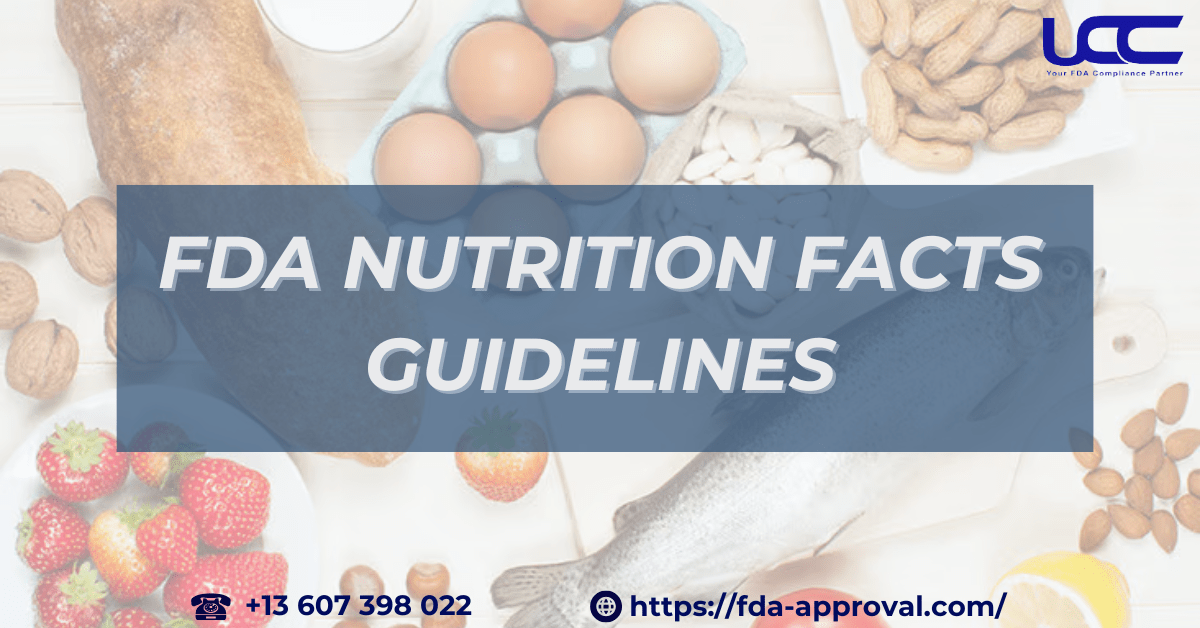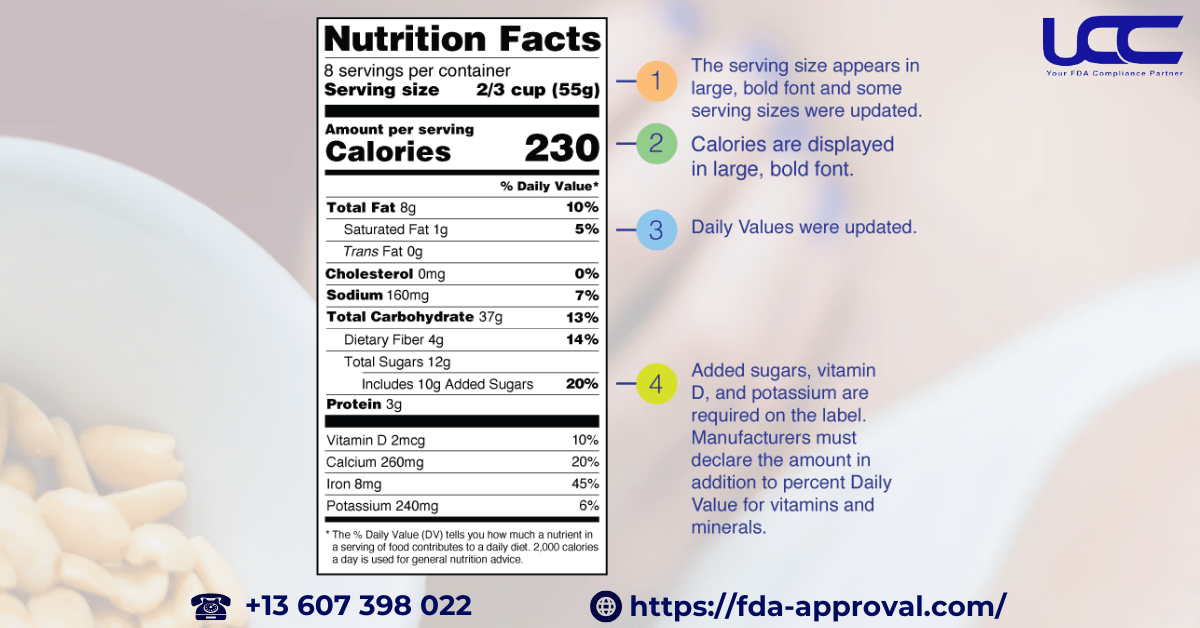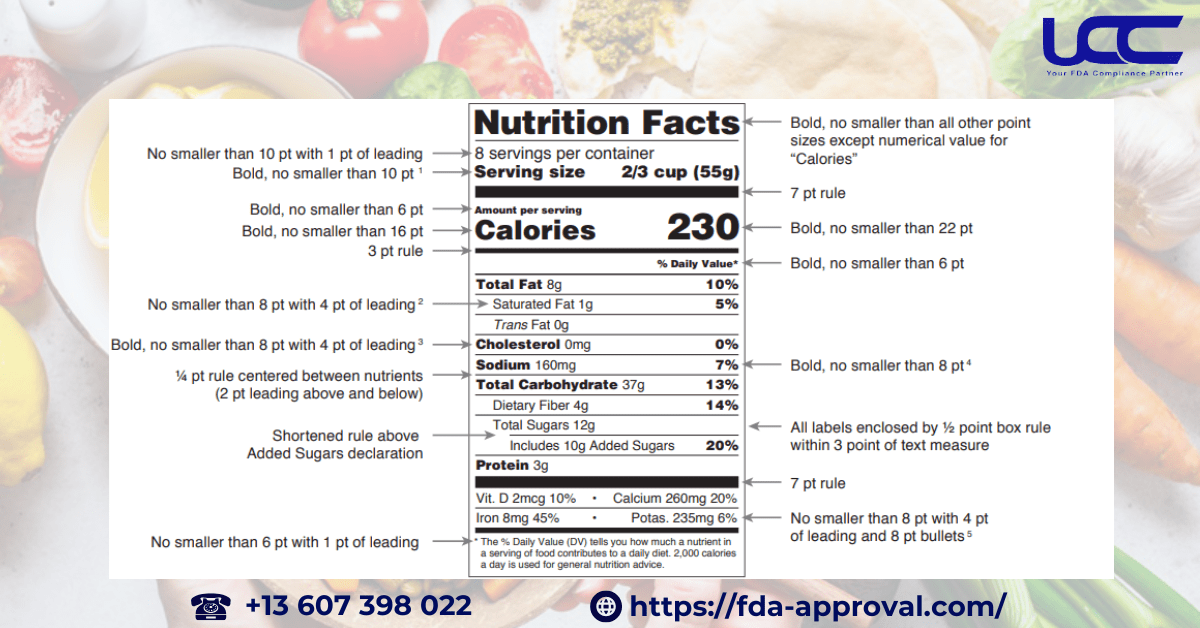An essential component of food labeling is the nutrition information, which provides consumers with a clear understanding of the ingredients and nutritional content of a product. As such, adhering to proper nutrition labeling is of utmost importance. In this article, UCC will outline the key requirements and considerations based on the FDA Nutrition Facts Guidelines when labeling the nutritional information on food products.

1. Changes in FDA Nutrition Facts Guidelines
In 2016, the U.S. Food and Drug Administration (FDA) made significant updates to the nutrition labeling requirements for packaged foods and beverages. These changes were based on new scientific research, advancements in nutrition studies, and input from the public and industry experts. It marked the first major update to nutrition labels in over 20 years. The FDA’s effort aims to improve public health information, making it easier for consumers to make informed dietary choices. These updates enhance the clarity and accessibility of nutritional information, empowering consumers to select foods that align with their nutritional needs and promote healthier eating habits.
2. Current FDA Nutrition Facts Guidelines

2.1. More Realistic Serving Sizes
The serving sizes on the label are now more realistic. The FDA displays serving sizes in larger, bold fonts for better visibility. These sizes are adjusted to reflect typical consumption amounts. Nutrition facts are provided per serving, although some packages may also include information for the entire package.
It’s important to note that serving sizes are not recommendations for how much you should eat. Also, a single package may contain more than one serving.
2.2. Highlighted Calorie Information in FDA Nutrition Facts Guidelines
Calorie content is now displayed in large, bold font, making it easier for consumers to identify. The FDA uses 2,000 calories per day as the general daily value, but this number can vary based on factors such as age, gender, height, weight, and physical activity level.
2.3. Percentage of Daily Value (%DV) – High and Low
The %DV shows how much a serving of food contributes to your daily diet. The FDA has updated most of the nutrient values. The label now explains %DV more clearly. For general guidance, a %DV of 5% or less is considered low, while 20% or more is considered high.

2.4. Updated Nutrient Information
The following are some important updates to the nutrition facts label:
- Removed Information: The calorie content from fat has been removed, as studies show that the type of fat is more important than the total fat amount.
- Vitamin A and C: These are no longer mandatory on the label, as deficiencies in these vitamins are rare. However, manufacturers can still list them voluntarily.
- New Additions:
- Added Sugars: The FDA added this to emphasize the impact of excessive added sugar consumption on nutritional needs while maintaining proper calorie levels.
- Vitamin D and Potassium: These are now mandatory due to common deficiencies in the U.S. Vitamin D helps reduce the risk of osteoporosis, while potassium can lower the risk of high blood pressure.
- Added Sugars: The FDA added this to emphasize the impact of excessive added sugar consumption on nutritional needs while maintaining proper calorie levels.
- Retained Information: Calcium and iron remain on the label due to their roles in reducing the risks of osteoporosis and anemia, respectively.
3. Key Considerations for FDA Nutrition Facts Guidelines

3.1. FDA Nutrition Facts Typography and Size Requirements
- “Nutrition Facts” must be printed in bold, with a font size no smaller than 10 pt and a line spacing of 1 pt.
- “Serving Size” must also be bold and in a font size no smaller than 10 pt.
- “Calories” should be bold and in a font size no smaller than 22 pt.
- Nutrient categories like “Total Fat,” “Cholesterol,” and “Sodium” must be bold with a font size no smaller than 8 pt.
- Nutrient values (e.g., 10%, 160 mg) must be bold and in a font size no smaller than 6 pt.
3.2. Spacing and Alignment
Nutrient values should be aligned evenly and centered relative to their respective labels. Line spacing (leading) typically ranges from 1 to 4 pt.
3.3. Line Length and Borders
All information on the label should be enclosed in a solid line border, as per the FDA Nutrition Facts Guidelines. The distance between the text and the edge of the border must not exceed half the spacing between individual elements. Additionally, text in each box must not exceed 3 font sizes larger than the established limit to ensure compliance with FDA labeling requirements.
3.4. Specific Information
Ensure the label clearly lists the following:
- Serving Size: For example, “2/3 cup (55g).”
- Servings per Container: Number of servings per package.
- Added Sugars: Clearly state the added sugar amount (e.g., “Includes 10g Added Sugars”).
- % Daily Value (% DV): Helps consumers understand how a nutrient contributes to their daily diet.
3.5. Footnotes
Footnotes must be clear, with font size no smaller than 6 pt and line spacing of 1 pt.
3.6. Bolded Information
The FDA requires bolding important items like “Calories” and nutrient names (e.g., Total Fat, Cholesterol) to help consumers easily find the information.
3.7. Formatting Nutritional Figures
Nutritional figures such as calories, %DV, and weights (mg, g) must be printed clearly and be easy to read.
For more information: Nutrient Content Claim: Understanding FDA Standards
By following these FDA nutrition facts guidelines, you can ensure your food labeling meets the necessary standards. Should you have any inquiries or require further clarification regarding FDA labeling requirements, please do not hesitate to contact UCC for expert guidance and support.



